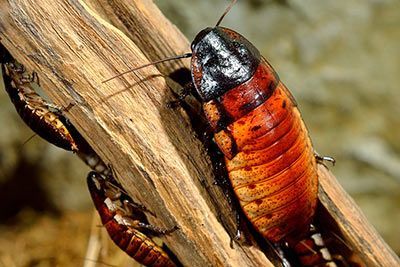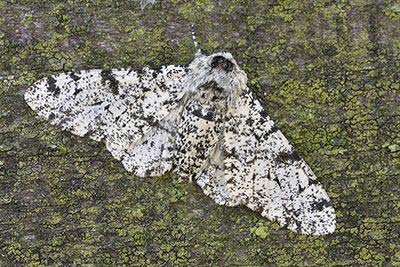Honey Bee
Honey Bee Facts
| Size | 0.4-0.7 in (11-18 mm) (body) |
| Speed | Up to 18 mph (30 km/h) |
| Weight | Unknown |
| Lifespan | 6 weeks to 6 month (worker, drones); 6 years (queen) |
| Food | Nectar, pollen |
| Predators | Birds, rodents, reptiles, insects |
| Habitat | Worldwide |
| Order | Hymenoptera |
| Family | Apidae |
| Subfamily | Apinae |
| Scientific name | Apis mellifera |
| Characteristics | Forms colonies; yellow-brown body |
Main Characteristics
Bees are insects that make honey and have a sting. Honeybees live in colonies with 10,000-80,000 bees. There are over 20,000 bee species worldwide.
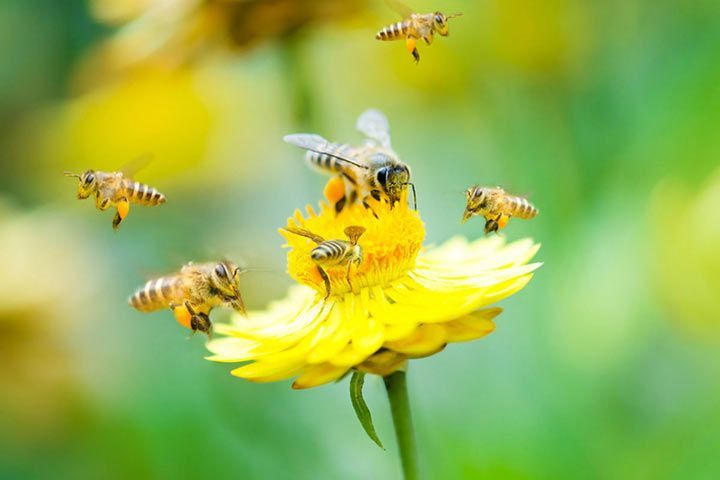
Anatomy and Appearance
Body
A bee's body is divided into three sections: head, thorax and abdomen.
Head
Bees have a pair of antennae attached to their head. They use them to touch, smell and even hear. They have five eyes: two large eyes, so-called compound eyes, and three small eyespots, so-called ocelli.
Legs
A bee has six legs. Often, you can see yellow clumps along their hind legs. They form when the bee collects pollen, because it sticks to its legs. The clumps are called pollen baskets.
Wings
There are four wings on the upper part of their body: two large forewings and two small hind wings.
Abdomen
In the abdomen are the stomach and intestines as well as the sting.
Proboscis
Even if you can't see it very well on most bees: they have a proboscis. They use it to suck the nectar from the flower's calyx.
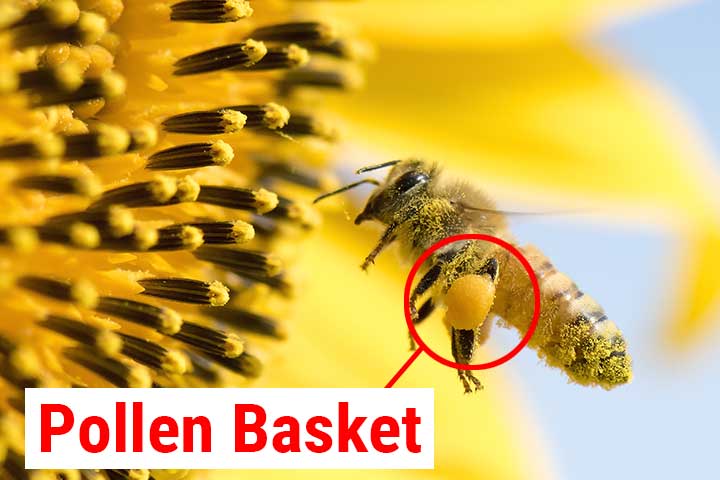
The Honey
How Do Bees Make Honey?
Bees collect nectar from flowers with their proboscis, a straw-like tongue. They store it in the so-called honey stomach or honey sac, where it will become honey eventually. To supply bee larvae with it, they vomit the sweet liquid.
Why Do Bees Produce Honey?
Because it tastes delicious with milk! Ok ... because they like it themselves? Maybe. Actually, they need it to survive the winter. Wasps, hornets and bumble bees die in winter – not just a few of them, but the entire colony with the exception of the queen, which spends the winter in a deep sleep. Queen bees cannot survive the winter like this, they have to feed on the sweet honey to keep their body temperature.
How much honey does a bee produce in a lifetime?
A single bee visits 200-300 flowers per day. That's a total of 5,000-10,000 in its entire life. But it only produces one or two teaspoons of honey in total.
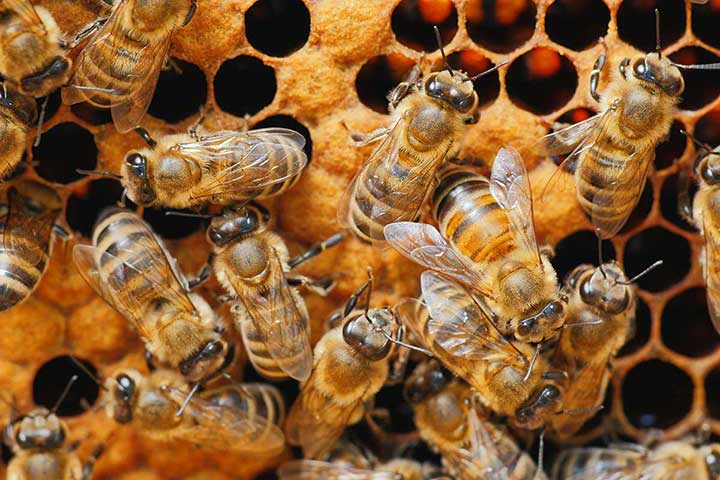
The Honeycomb
Bees build hexagonal cells out of wax. Together they form a honeycomb. Inside the cells, the queen's eggs develop into larvae. They are fed until they are big enough. The cell is then sealed with a wax lid. The larva pupates and after 21 days a new bee hatches! The cells are also used to store honey and pollen for the winter.
How Do Bees Make Wax?
Bees have wax glands located on the bottom side of their abdomen. They produce liquid wax. It looks like they „sweat it out“. The wax is kneaded with the mouthparts and brought into a hexagonal honeycomb shape.
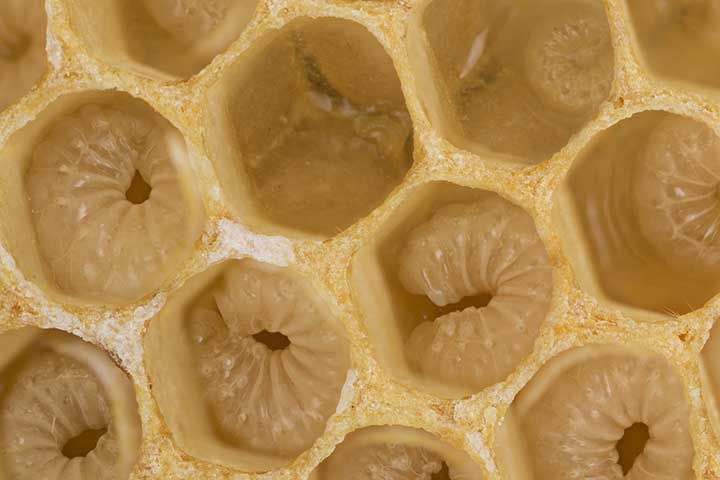
Senses and Abilities
Sense of Sight
Compound Eyes
Bees have a fascinating sense of sight. In worker bees, the large compound eyes consist of 4,000-6,000 tiny individual eyes. What they see is a kind of big jigsaw puzzle made up of many small pieces. In contrast to us humans, everything is equally sharp for them - but only up close. The animals do not see very well at a distance.
Colors
Bees see colors differently than we do. They see yellow and blue best. They don't see green and red very well. Green looks more gray and red looks like black to them. Therefore, the animals only fly to red flowers if the flower also has other colors.
Polarized Light
Honey bees can see polarized light and thus they can determine the cardinal direction. Read more about this in the mantis shrimp fact file!
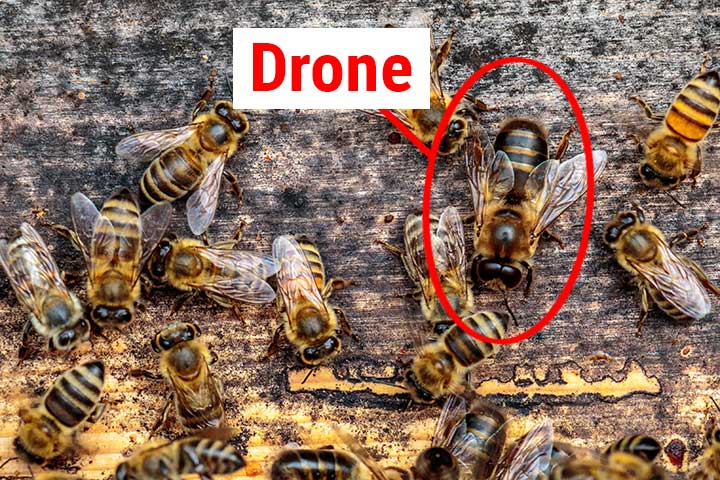
The Honey Bee Colony
There are three types of bees in a colony:
• Worker
Most bees in a colony are female. They are called workers. They collect pollen and nectar, take care of the larvae, make wax, build the honeycomb, keep the hive clean and defend the colony.
• Drones
The drones are male bees. They fertilize the eggs of the queen, but collect neither pollen nor nectar and they do not have a sting. Drones are bigger, have a broader body and larger compound eyes than the workers.
• The Queen
There is only one queen in a bee colony. It is much bigger and longer than the workers and drones. A queen bee can live up to six years and lay up to 2,000 eggs a day - up to two million in her life.
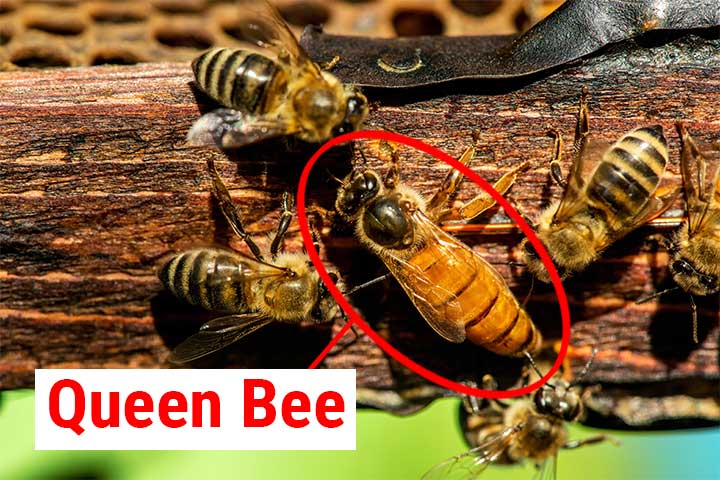
The Waggle Dance
Just imagine you are a bee and locate some absolutely delicious pollen. But you are only able to take some of them home. You return to your hive and want to tell your buddies about it. But how? You are a bee. And bees can’t talk. Nevertheless they are able to inform their friends where they can find the pollen: They communicate by performing the "waggle dance".
While dancing, they first take some steps straight forward. Then they go in semi-circles, alternately clockwise and anti-clockwise. It's like a figure-eight pattern. How long and in which angle they waggle tells the others about the direction and distance of the “honey-pot’s” location. The other bees imitate the dancers, try to learn the choreography and memorize the smell of the pollen before hitting the trail.
Importance for the Ecosystem
Many plants rely on pollination by bees because otherwise they can not reproduce. In particular, wild bees (and bumblebees) are important for biodiversity, because they already pollinate flowers in early spring when the honey bees are not active yet.
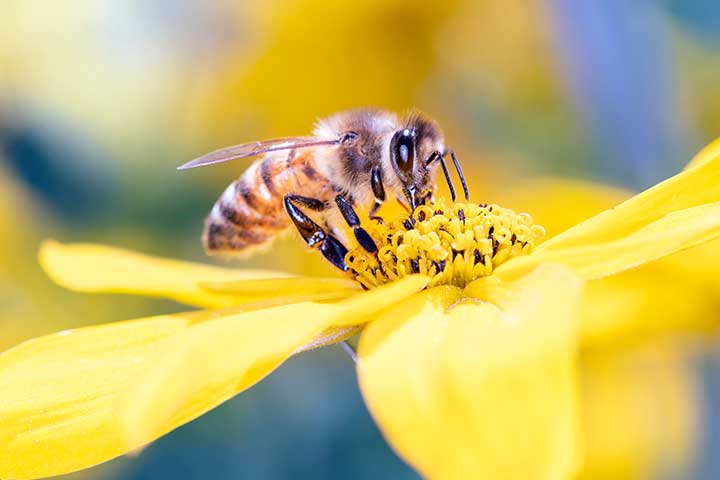
Enemies and Threats
How Do Honey Bees Defend Themselves?
Often, honey bees don't stand a chance against hornets. But some are very smart and can fire-up hornets, quite literally. If a spying hornet is detected near a beehive, several dozen bees encircle and form a kind of sphere around it. They fiercely flap their wings to increase the temperature inside the sphere to 113 degrees Fahrenheit (45 degrees Celsius). This is too hot for the hornet. It dies and cannot return to its colony to inform the other hornets about the location of the beehive. Some honey bees can even survive temperatures of 122 degrees Fahrenheit (50 degrees Celsius) for a short while.
What Happens When a Bee Stings?
That depends on who the bee stings. Its sting has small barbs. When it stings other insects, it can withdraw the stinger without the barbs catching on it. But we humans have soft, elastic skin. If we get stung, the stinger gets stuck in our skin. When it tries to pull it out again, its whole abdomen usually tears off with it. So the bee dies.
How Many Bee Stings Can a Human Survive?
If one is not allergic, it is possible to withstand ten bee stings per lb of body weight (or twenty stings per kg). For a person weighing over 170 lb (80 kg) that would be more than 1,500 stitches.
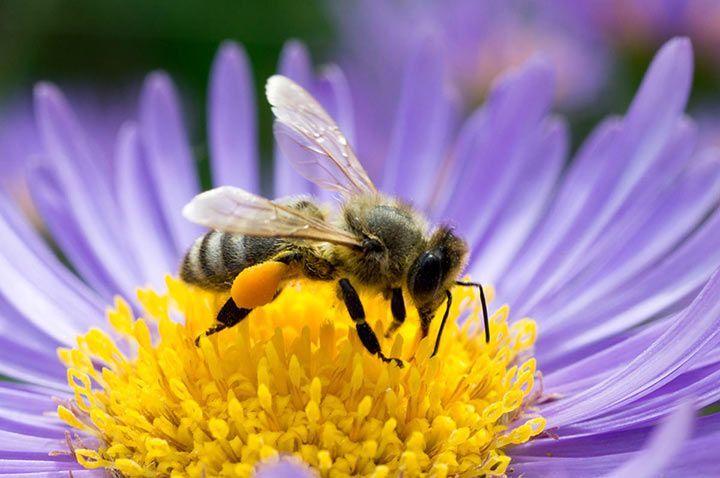
Fun Facts
The Pooping Flight
Actually, it is called cleansing flight, but the term "pooping flight" instantly reveals what it's all about ;) Well, even bees have to poop. In winter this is not easy, because outside the bees would freeze to death. The bees hold back their poop until it is at least 32 degrees Fahrenheit (10 degrees Celsius) outside. Especially in spring, when many bees fly out at once, you can see their poop - especially on cars. It look like yellow dots.
Why Do Beekeepers Use Smoke?
The smoke fakes a forest fire. The insects get into a panic and start to collect emergency food rations instead of stinging. It's like trying to save things from the apartment before it burns down (which of course you should not do, but back off to safety).
Featured Posts:
Find Out More:
Watch Now on animalfunfacts.net:









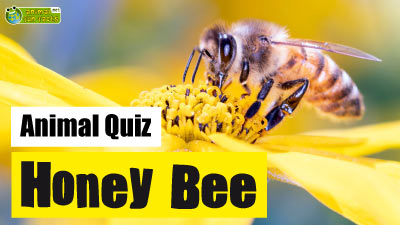
 Why Do Animals Team Up?
Why Do Animals Team Up?
